FREE-TO-ATTEND TECHNOLOGY PRESENTATION STAGE
Hall 8 Thursday, June 15 - Hall 8 - morning session
10:50
How to build a validation and verification service for batteries
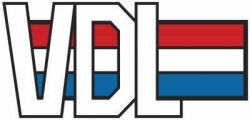 Peter Janssen
Peter JanssenManager Testing and Proto Build
VDL Enabling Transport Solutions BV
Netherlands
The rapid development of battery supply and demands is challenging for the industry. Technological and regulatory developments are following up in a high pace making batteries for vehicles safer, less expensive, and ever more durable. These developments demand an ever-broader validation and verification approach. The lessons learned from experiences in other domains are valuable inputs for a battery validation and verification approach.
What the audience will learn
- Battery testing method
- Best practices for testing in other domains
- Offer on battery testing of cell, module and pack
11:10
Power measurement done quickly, safely and without EMC issues
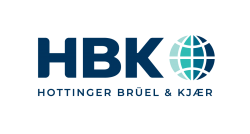 Klaus Lang
Klaus LangBusiness Develoment Manager
Hottinger Brüel & Kjaer
Germany
This presentation gives an introduction to the latest developments in power analysers. Basic on optical fiber technologie, a new and distributed approach to power measurement is explained. Remote satellites for voltage and current measurement, linked to a base unit with fiber-optic cables only, allow safe measurements in harsh environments and also eliminate any EMC issues based by long signal cables.
This new generation power analyser will enable to do powertrain efficiency measurments faster, without EMC distorting the results, and absolutely safe. A game changer in the world of power measurement.
What the audience will learn
- Safe power measurement
- Eliminating EMC issues in power measurement
11:30
Challenges of AI for inspection during the production of automotive parts
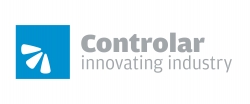 Carlos Rocha
Carlos RochaTest Engineer
Controlar SA
Portugal
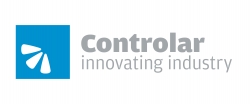 Shravan Dev Rajesh
Shravan Dev RajeshProject Coordinator Test Systems
Controlar SA
Portugal
The use of AI in the automotive industry has seen an increasing growth. When applied to test systems in a production environment, it can bring many benefits, like an improvement in efficiency and accuracy.
It also poses several challenges, like the need for large amounts of data to train the AI models. It is difficult to build these datasets before the product entering into mass production, due to the need of including samples without and with several types of defects.
Controlar aims to present some innovative projects in this field, that tackled these problems and have shown promising results.
What the audience will learn
- The difficulties in integrating AI in test systems for production, which includes the need for large datasets.
- Presentation of systems developed by Controlar, that apply AI to detect defects within the production of different automotive parts.
- Comparation of different methodologies to acquire data/images from products that are still not in production.
- Describe strategies to effectively monitor and maintain AI systems, to ensure their continued performance and accuracy.
- Explain how it is possible to manage the deployment and integration of AI models within existing systems and processes.
11:50
Applications of industrial computed tomography in the automotive field
 Nicola Tognetti
Nicola TognettiTest Engineer
Pontlab S.r.l
Italy
Industrial x-ray computed tomography (CT) is a very promising method for non-destructive analysis and inspection of complex parts. CT technique allows to measure internal geometries, which are inaccessible by conventional measurement systems, and also to look inside components without destroying, opening or even touching them.
The aim of this presentation is to describe the characteristics of the CT machine Phoenix V TOME X M300 located in Pontlab S.r.l, a testing and analysis laboratory near Pisa, with particular attention to the advantages of the GE’s Scatter Correction system for the improvement of image quality. Cases of study will be presented.
What the audience will learn
- Introduction to CT scan technology
- Advantages of the GE’s Scatter Correct system
- CT scan cases of study for failure analysis and quality control
Hall 10 Thursday, June 15 - Hall 10 - morning session
10:30
New dimension of high-speed testing dynos
Bjoern Scheiffele
Engineering, Sales & Services
Dynamic E Flow
Germany
Engineering, Sales & Services
Dynamic E Flow
Germany
Capcooltech. The patented technology allows the windings of the motor to be made from hollow conductors. This allows the current density to be increased by up to 7 times during continuous operation of the machine without risking overheating of the winding. Together with the current density, the torque and power density increase, so that Dynamic E Flow can offer machines for special performance requirements in the test bench DEF testing motors are much smaller and powerful then competing testing motors. This allows field operators to test with higher accuracies and it allows to test a far bigger variety of customer-motors.
What the audience will learn
- function of High speed dyons
- hollow conductor for testing dynos
- high end cooling for testing dynos
- up to 25.000 rpm/up to 1.200 Nm torques
- electric machines with direct cooling
10:50
End of line and in-line battery testing, challenges and opportunities
 Valentin Wey
Valentin WeySales Manager E-Mobility
HORIBA Europe GmbH
Germany
HORIBA will present challenges and opportunities concerning state of the art battery testing for end of line and in-line processes.
For this purpose, a customer case from a well known OEM will be used anonymously. A specific focus lies on the explanation of different test stations such as high volage / low voltage, flash station, leakage testing and others. Additionally Valentin Wey will provide a detailed explanation of required software automation and its capabilities. In conclusion HORIBA will provide a brief outlook on upcoming trends and changes for the area of battery testing.
What the audience will learn
- Battery testing end of line
- Battery testing in line
- Software capabilities for battery testing
- Outlook of trends concerning the area of battery testing
11:10
Localization of leakages in automotive structures
 Dr Thomas Rittenschober
Dr Thomas RittenschoberCEO|CTO
Seven Bel GmbH
Austria
This contribution describes a novel method for visualizing leakages in automotive structures using a rotating linear array of a few digital ultrasound microphones in combination with a boadband ultrasound transmitter. In a typical measurement setup, the ultrasound transmitter is placed in a cavity (e.g. car interior, trunk or similar). The setup and methodology is evaluated for leakage and tightness testing of actual automotive components and structures for production cars in a quality control context. The corresponding troubleshooting process from assessment and quantification of the situation to resolution of the root cause is described from a user perspective.
What the audience will learn
- Challenges of acoustical leakage detection and localisation in automotive structures
- Requirements and limitations for acoustic measurement instruments in the context of leakage localisation
- Successful use cases from premium automotive OEMs
11:30
Highly dynamic BMS test system with real-time electrochemical impedance simulation
 Abdulkerim Dagli
Abdulkerim DagliSales Manager
MicroNova AG
Germany
This presentation considers the results of the ZSIM project which was funded by the german Federal Ministry of Education and Research (BMBF). Aim of the project, carried out jointly by Fraunhofer IEE and MicroNova AG, was to raise the electrical simulation of battery cells for the development of algorithms for battery management systems to a new technological level.
The main innovation in the project was the ability to simulate the dynamic state of a battery for arbitrary operation points. This goes far beyond the current state of the art where mainly cell voltages at a low rate (millisecond) are simulated.
What the audience will learn
- advanced measurement methods such as electroimpedance spectroscopy (EIS)
- development of algorithms for battery management systems at a new technological level
- New level of BMS HiL Testing
11:50
Testing the smart and bidirectional charging of electric vehicles
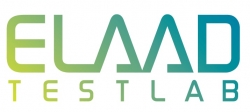 Thijs van Wijk
Thijs van WijkManager Elaad Testlab
ElaadNL
Netherlands
To ensure the successful integration of electric vehicles with the electricity grid, the ElaadNL foundation, founded and funded by the Dutch electricity grid operators, has set up a new lab where electric vehicle and charging station manufacturers can bring their devices and have them tested for free on interoperability, smart charging, V2G and power quality. During this presentation ElaadNL will present the capabilities of the 900m2 test lab, the tests, why these tests are important and share best practices from previous test. These will help manufacturers to prevent charging issues, increase customer satisfaction and support the transition to electric mobility.
What the audience will learn
- Lessons learned from more than 40 electric vehicle tests and hands-on experiences with the (smart) charging of electric vehicles.
- The (not yet standardized) tests that should be performed to ensure a smooth charging experience for customer, charger and grid.
- What new standards does a V2G vehicle need to comply with? And how to test on those?
- Knowledge about (new) Power Quality disturbances, like Supraharmonics, their effects on devices and grids, upcoming standards and mitigating measures.
- What tests can the Elaad testlab offer you? And how can you make an appointment?
